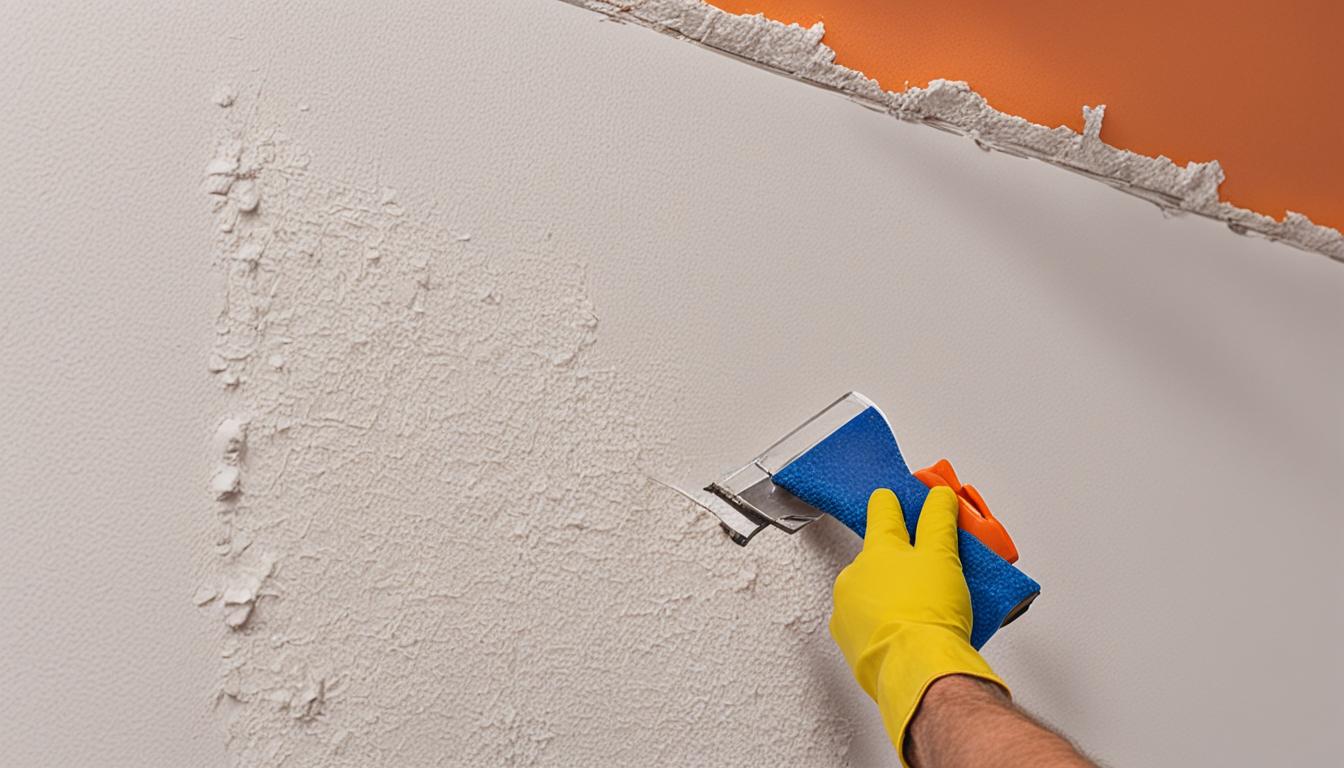
In the United States, maintenance costs increase by 14% due to unaddressed damage. This includes acoustic ceiling tile repair. These tiles are known for absorbing sound and adding beauty. But they can get damaged. We need to fix problems like water damage and wear and tear to keep the tiles working well. This guide will show you how to repair damage to acoustic ceiling tiles the right way.
Dealing with a small scratch or repairing water damaged acoustic ceiling tiles can be annoying. Our expert tips are here to make repairs easy. Keeping your acoustic tiles in good shape can save you money. We’re here to guide you through fixing damaged acoustic tiles. We want your ceiling to look and work like it’s brand new.
Evaluating the Severity of Acoustic Tile Damage
Let’s talk about how to evaluate the severity of acoustic tile damage. This step is key to keeping your ceiling in good shape. Acoustic ceilings help block noise but can get damaged, especially by water. Knowing how to spot water damage, the importance of a pro’s help for hidden problems, and why we shouldn’t ignore small issues is vital for a ceiling that lasts and works well.
Signs and Symptoms of Water-Damaged Ceiling Tiles
Spotting the signs of water-damaged ceiling tiles is important to stop more damage. If tiles look discolored, stained, warp, or sag, water might be the culprit. Mold or mildew means the moisture’s been there a while. Beyond just looking bad, water damage can also ruin the tiles’ ability to mute sound. Paying close attention helps decide if you need to fix or replace them.
Professional Assessment for Hidden Issues
Sometimes, the damage isn’t easy to see. A professional assessment for hidden issues can find out how deep moisture got, if the structure’s sound, or if mold is hiding. Pros have special tools and know-how to check damage well. This helps in planning the best fix and avoiding health risks from bad ceiling tiles.
The Risks of Overlooking Minor Tile Imperfections
It’s easy to ignore small issues with tiles. But, those little problems can point to bigger ones that might get worse. Small cracks or chips can get bigger, and minor blemishes may hint at water damage. Not fixing minor tile imperfections could mean more damage and cost later, and it can also affect how your ceiling looks and works.
“Ensuring the acoustic efficacy and longevity of your ceiling starts with recognizing the early warning signals. Timely repairs not only maintain appearances but can also forestall extensive future refurbishments.”
Here is a table with common water damage signs in acoustic ceiling tiles:
| Sign | Description | Potential Consequence |
|---|
| Discoloration | Unusual spots or off-color areas, especially brown or yellow | Mold growth and pleasing aesthetics compromised |
| Tile Warping | Changes in the flatness or shape of tiles | Weakened tiles that may become a fall hazard |
| Odor | A musty or stale smell | Indication of mold or mildew that can affect air quality |
| Mold Presence | Visible growth on tile surfaces | Health risks and a clear sign of prolonged moisture issues |
Preventive care and keeping an eye out for signs of water-damaged ceiling tiles will make your acoustic ceiling last longer and work better. Also, understanding the risks of overlooking minor tile imperfections and knowing when it’s time for a professional assessment for hidden issues keeps your space safe, looking good, and sounding right.
Repairing Damage to Acoustic Ceiling Tiles
Fixing acoustic ceiling tiles is important to keep your space looking and working well. Before starting, make sure you have everything you need. The steps include taking out damaged tiles and fixing or replacing them. It ends with making your new tiles blend in.
First, figure out which tile needs fixing. Then, remove the tile without messing up the ones around it. You might have to push and tilt the tile to get it out. Check the insulation too, to see if it’s okay or needs replacing.
- Remove Damaged Tiles: With care, take out any broken tiles from the ceiling grid.
- Inspection and Repair: Look for insulation problems, then fix or replace as needed.
- Tile Replacement: Put the new acoustic ceiling tiles in the grid correctly.
- Painting: Paint the new tiles to match the rest of the ceiling if needed.
- Finishing Touches: Do the last bits needed to make your ceiling look uniform and nice.
Taking care of your acoustic ceiling tiles makes them last longer. It keeps the sound and temperature control working well. Clean and check them regularly. This helps avoid big repairs and keeps your space in top shape.
This info helps you fix ceiling tiles and stresses the importance of looking after them. If fixing tiles seems hard, it might be good to get a professional’s help.
In short, fixing your acoustic ceiling tiles is doable and helps your ceiling look and work better. Follow these steps to save money and enhance your space’s sound and look.
Conclusion
Repairing damage to acoustic ceiling tiles is key to keeping your space both useful and beautiful. This guide showed you important steps—from finding how bad the damage is to fixing it well. The main aim is fixing damaged acoustic tiles right so your ceiling looks and sounds good again.
Repairing water damage or small flaws involves certain steps. Acoustic ceiling tile repair enhances your space’s durability and look. By carefully removing and replacing damaged tiles, you help keep your place safe and valuable.
In short, check your ceiling often and fix problems early to avoid big issues. This guide helps you meet the demands of repairing damage to acoustic ceiling tiles. It’s about protecting your home or office’s overall quality.